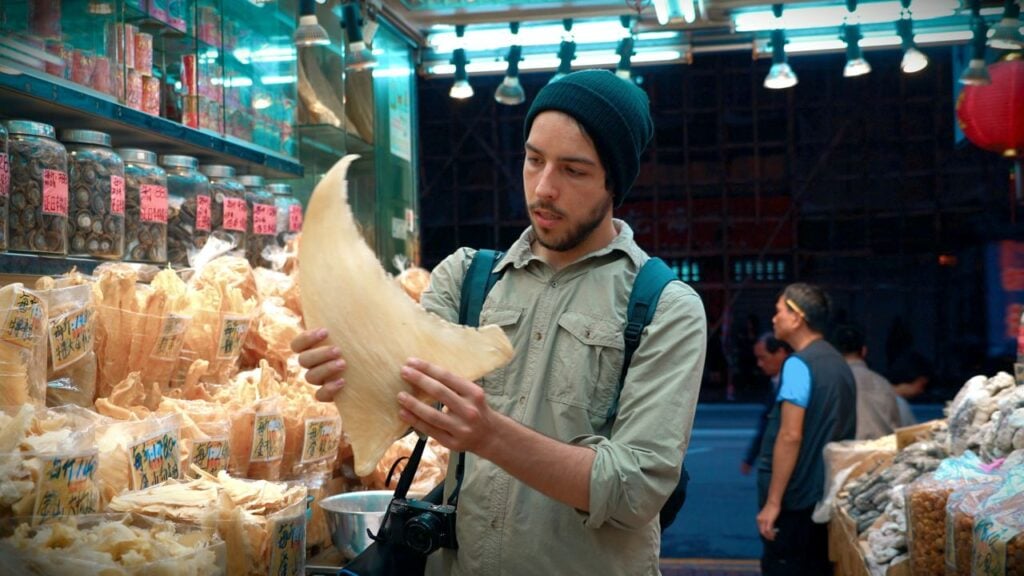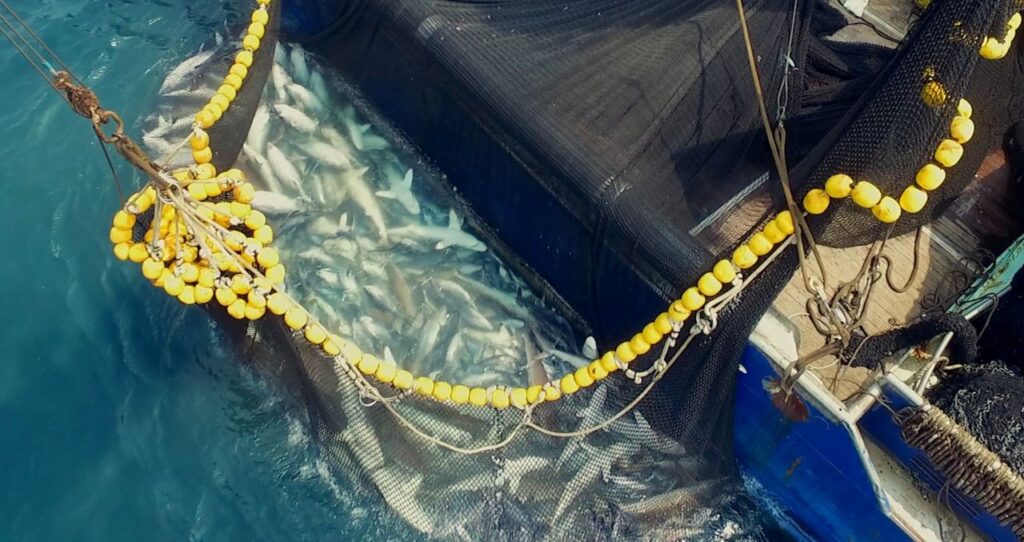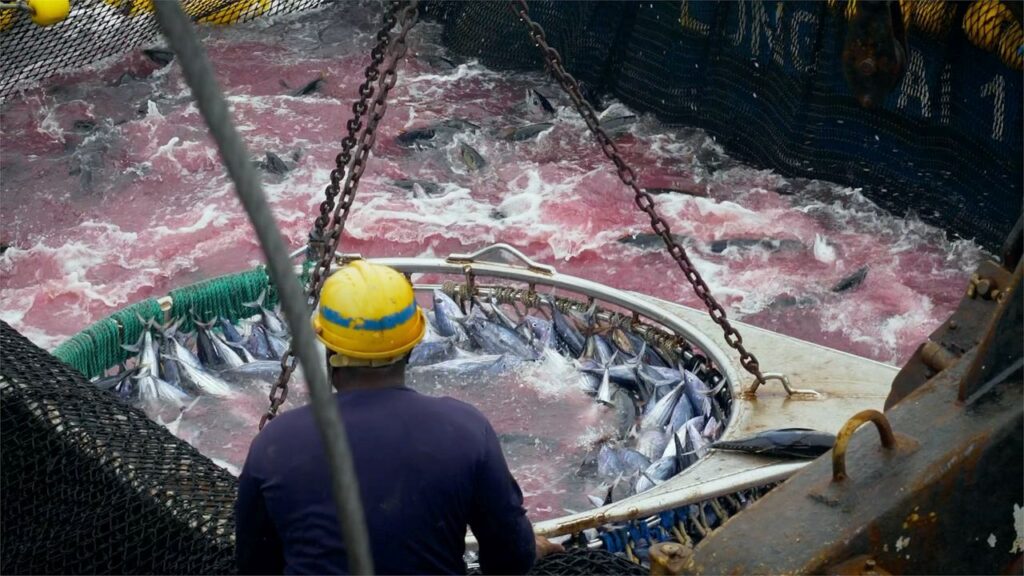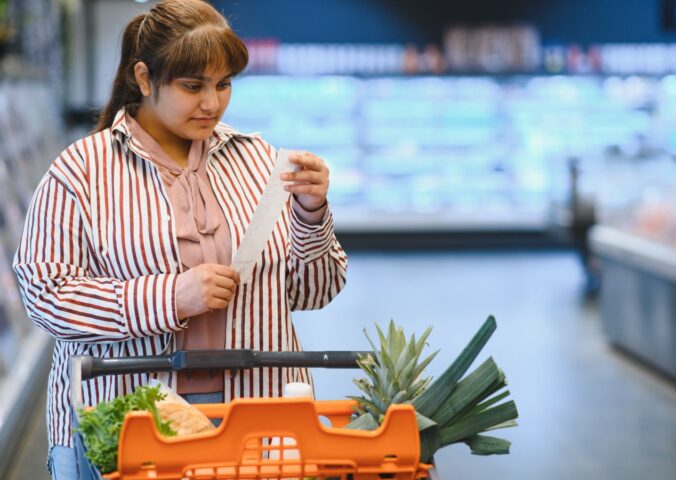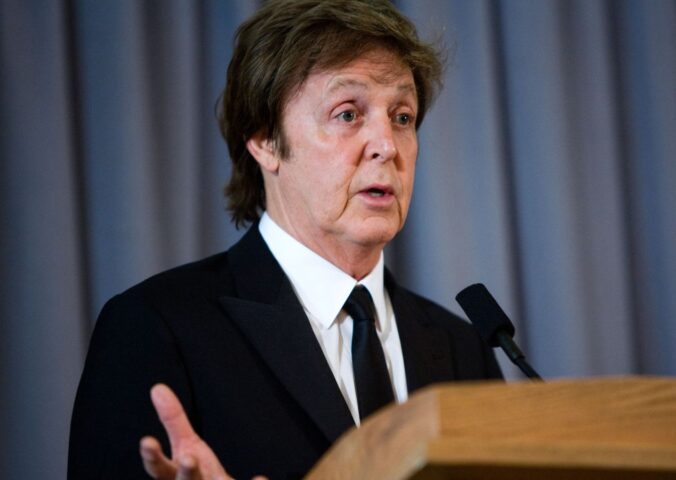We are Ali and Lucy Tabrizi, the directors of Seaspiracy. It’s the popular Netflix documentary that charts our journey across the world as we uncover the horrors of modern industrial fishing.
Now, we’re asking you to sign our petition to protect 30 percent of the oceans by 2030.
We’ve both loved the ocean for as long as we can remember. The sea has given us so much happiness and it was our dream to make a documentary about marine life.
But once we started filming, we realised the documentary would be different to what we imagined. We grew up with a romantic view of the ocean. But what we found was utterly devastating.
We saw horrific killings and corruption. And we revealed a deafening silence over industrial fishing’s role in emptying our seas.
We knew we had to expose how the global commercial fishing industries are killing our oceans.
How bad are things?
We don’t know what the hardest part has been: seeing dolphins trapped in killing nets in Taiji, our trip on a deep-sea trawler, or getting the big environmental groups to talk to us.
What we know is this: the global commercial fishing industries are killing our oceans.
According to the United Nations FAO around 87 percent of the world’s fish populations are ‘fully fished’ or ‘overfished’. Nearly a third of edible fish populations have declined by 90 percent.
That same study says this: “If biodiversity continues to decline, the marine environment will not be able to sustain our way of life. Indeed it may not be able to sustain our lives at all.”
Destroying our oceans
The global fishing industry has more than doubled in capacity since 1950. It’s now so huge it can’t help but destroy our oceans. What we discovered making Seaspiracy was this:
- Fishing has wiped out 90 percent of the world’s large fish.
- More than 300,000 dolphins, whales and porpoises are killed by fishing operations every year.
- More than $35 billion is paid in subsidies to industrial fishing every year.
- Fishing kills 30,000 sharks EVERY HOUR.
There was more. Global fish consumption is going up at an average of 3.1 percent a year, almost twice that of world population growth (1.6 percent). Consumption of fishes is also growing at a higher rate than other animal protein foods like meat and dairy.
Inefficient and cruel
Between 10-40 percent of all fish caught are by-catch. Biodiversity in our oceans is disappearing. Many species of aquatic life have been fished to the brink of extinction.
Our taste for fish is killing the oceans as fishing becomes mechanised, industrialised, and unstoppable. And we saw first-hand the two big killers out at sea.
Bottom trawling
Bottom trawling involves dragging heavy-weighted nets across the seafloor to capture fish. It’s a popular method for the fishing industry as it catches huge amounts of fish in one go—responsible for a quarter of all wild-caught fish.
But it turns our seas into wastelands. Dragging these weighted nets across the ocean beds captures everything and anything in the way. We also know it pumps out as much carbon dioxide as the entire aviation industry.
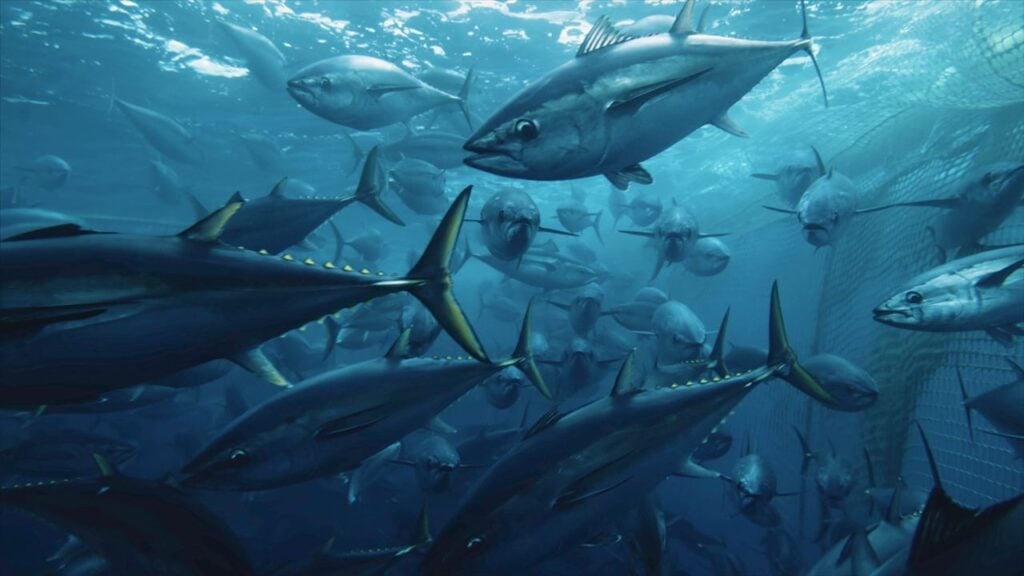
Longline fishing
Longline fishing involves trailing lines of nets miles and miles long through the oceans, with thousands of baited hooks attached. The average long line in U.S. waters is 28 miles (45 kilometres) long.
Around 50 million sharks are caught as by-catch. Every year, around 650,000 whales, dolphins, sea lions and turtles are killed this way, more than one every minute. All this for seafood – and profit.
That’s why we made this film. That’s why we’re asking you to get involved.
The solution
We know things can change. We can reverse this.
With Seaspiracy we were able to show the world the horrific problems of industrial fishing. But we were also able to share the solution.
We have three steps to pull our oceans back from the brink. We need to:
- Support the 30×30 campaign and protect 30 percent of the global oceans with enforced no-catch marine reserves by 2030.
- End the $35 billion annual subsidies for industrial fishing.
- Support the growth of vegan seafood and the switch to plant-based diets.
Why is this important?
We need urgent management of our oceans that sets aside zones completely free from any human activity.
That’s why we’re calling for no-catch marine reserves that protect at least 30 percent of the oceans by 2030. Will you join us?
Not everyone can go and spend years making a film. But you can protect the oceans by being part of our campaign.
There are more important reasons to join us:
- Protect the lungs of our planet: 50- 85 percent of the oxygen we breathe comes from marine phytoplankton, tiny ocean plants that photosynthesise and produce oxygen. When we protect the oceans, we protect the air we breathe.
- Protect our climate: Oceans play a major part in regulating the temperature and climate of the Earth. When we protect the oceans, we fight climate change.
- Protect our wildlife: Our oceans are the planet’s largest habitats, home to billions of individuals. When we protect the oceans, we are fighting for their lives.
The last generation to act?
But don’t just listen to us. Jane Lubchenco is a marine biologist from Oregon State University. She knows that ecosystems can recover if immediate action is taken.
“The first conclusion about the downward spiral [of biodiversity] suggests that the rate of implementation of those recovery tools needs to be sped up quite significantly,” says Lubchenco.
But she also says: “Just making recommendations doesn’t make things happen, unfortunately.”
The Seaspiracy petition
Unless we act now, we will live to see the death of the oceans and our children will never know the wonder and beauty of our once thriving blue planet.
Seaspiracy has exposed the truth, but we can’t fix this on our own. Now we need action, and that’s where you come in. Together we can change this.
Join the campaign to save our oceans. Sign now, and become part of this historic movement.
